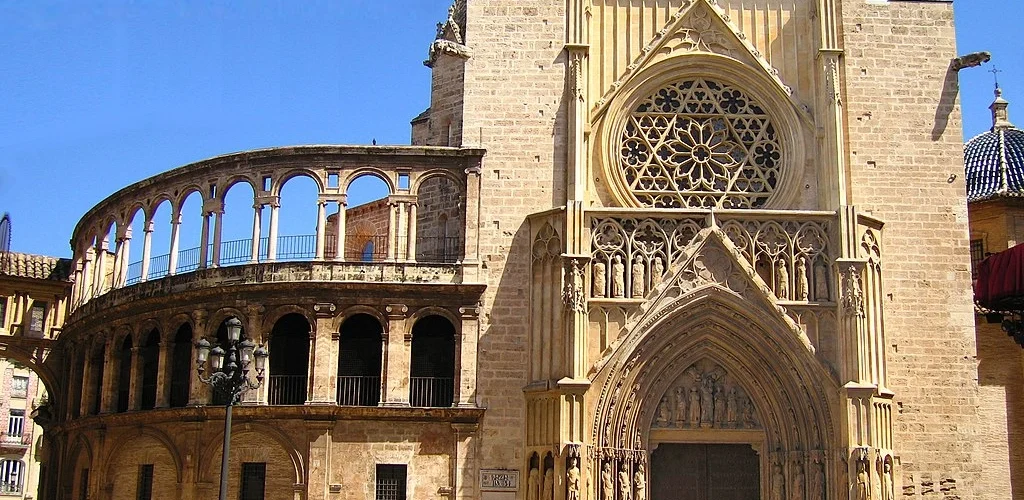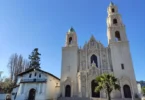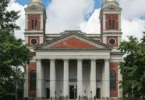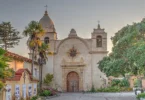Introduction
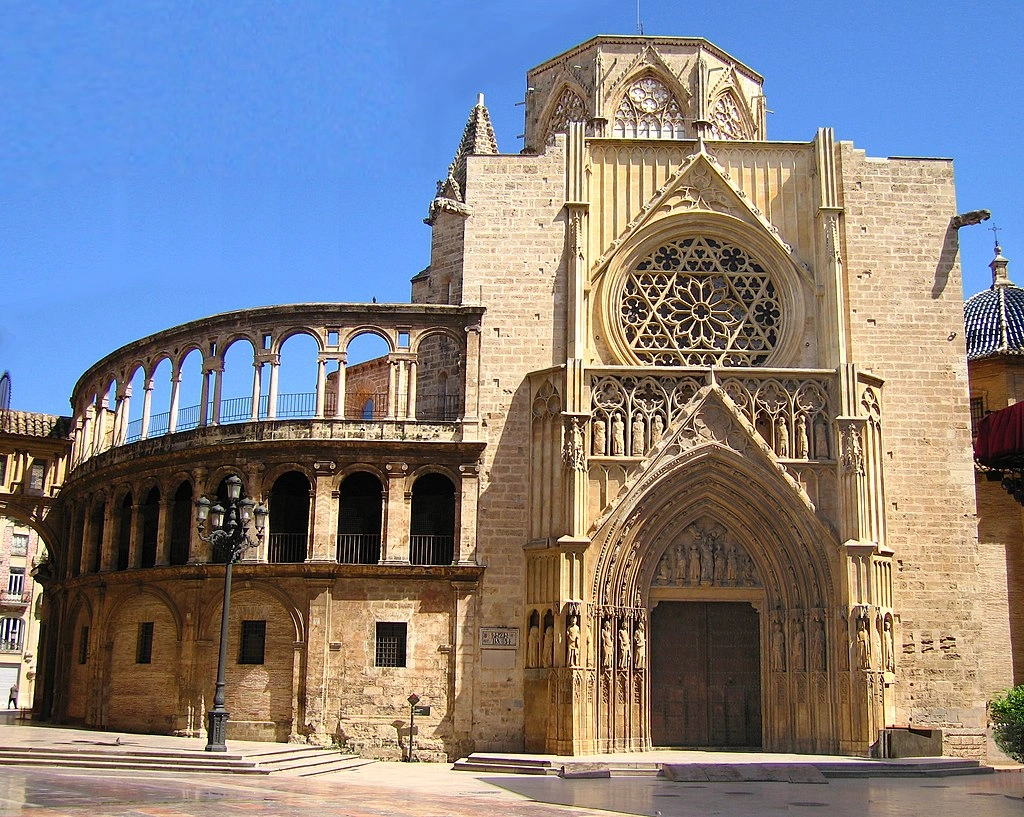
Valencia Cathedral, formally known as the Metropolitan Cathedral–Basilica of the Assumption of Our Lady of Valencia (Spanish: Iglesia Catedral-Basílica Metropolitana de la Asunción de Nuestra Señora de Valencia; Valencian: Església Catedral-Basílica Metropolitana de l’Assumpció de la Mare de Déu de València), and commonly referred to as St. Mary’s Cathedral, is a prominent Roman Catholic church located in the heart of Valencia, Spain. Consecrated in 1238 following the Christian reconquest of the city, the cathedral was dedicated to the Virgin Mary by James I of Aragon, known as James the Conqueror, and blessed by Pere d’Albalat, the Archbishop of Tarragona and the first bishop of Valencia after the Reconquista. The site on which the cathedral stands has a layered religious history: originally a Visigothic cathedral, it was later converted into a mosque during Muslim rule before becoming a Christian church once again.
Architecturally, the cathedral is a stunning mosaic of styles reflecting centuries of transformation and artistic influence. While the dominant style is Valencian Gothic, elements of Romanesque, French Gothic, Renaissance, Baroque, and Neoclassical design are also present, showcasing the building’s long and evolving history. The interior of the cathedral houses an impressive collection of 15th-century paintings, including works by Valencian artist Jacomart and renowned Italian Renaissance painters Francesco Pagano and Paolo da San Leocadio. These commissions were initiated by Rodrigo Borgia, the future Pope Alexander VI, who was born in the region and later played a pivotal role in elevating the status of the Valencian See to that of a metropolitan archdiocese in 1492, a title granted by Pope Innocent VIII. One of the cathedral’s most venerated treasures is a relic known as the Holy Chalice, which is kept in a specially dedicated chapel. Believed by many to be the true Holy Grail, this relic attracts pilgrims and visitors from around the world, adding to the spiritual and historical significance of the cathedral. Today, Valencia Cathedral stands not only as a central place of worship but also as a symbol of the city’s complex religious and cultural heritage, drawing scholars, art lovers, and travelers alike.
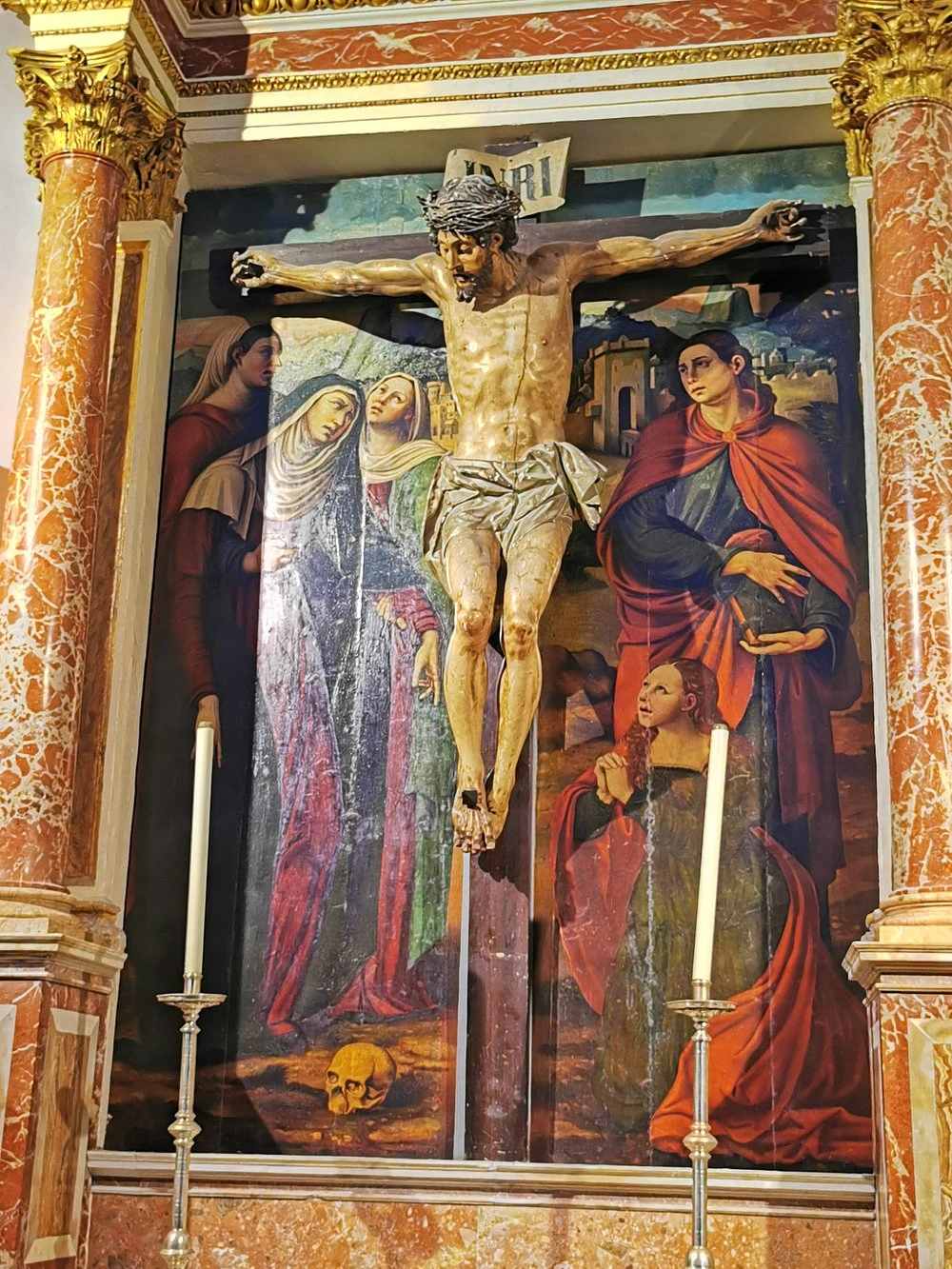
Early Foundations and Reconquest
Valencia Cathedral was largely constructed between the late 13th and 15th centuries, during a pivotal era in the city’s Christian reconsolidation following the Reconquista. The cathedral was built on the site of an ancient Visigothic cathedral, which had been converted into a mosque during centuries of Muslim rule in the Iberian Peninsula. Excavations at the nearby Almoina Archaeological Centre have revealed remains of this early Visigothic structure, highlighting the site’s long-standing religious and cultural significance. The Christian reconquest of Valencia occurred in 1238 under the leadership of King James I of Aragon. Despite the change in political control, the mosque-cathedral complex remained largely intact for several decades. Historical records indicate that the mosque preserved its Koranic inscriptions on the walls and continued to function until June 22, 1262, when Bishop Andreu d’Albalat ordered its demolition to construct a new Christian cathedral. This decisive act symbolized the restoration of Christian religious authority in the city.
The Gothic Cathedral and Architect Arnau Vidal
Following the mosque’s demolition, Bishop Andreu d’Albalat commissioned architect Arnau Vidal to design a new cathedral in the prevailing Gothic style. The construction began shortly after 1262 and extended over several centuries, mainly spanning the 13th to the 15th centuries. The Gothic style, especially the regional variant known as Valencian Gothic, formed the core architectural language of the cathedral. However, due to the long and phased construction, the building also incorporates elements of earlier Romanesque style and later Renaissance, Baroque, and Neoclassical influences.
Relationship to the Former Mosque
Scholars suggest that several features of the current cathedral correspond to elements of the former mosque. The transept likely aligns with the mosque’s original main prayer hall, the Apostles’ Gate is believed to have been the mosque’s principal entrance, and the Almoina Gate may correspond to the mihrab, the niche indicating the direction of Mecca. This architectural continuity reflects the layered religious history of the site.
Materials and Construction
Building materials were sourced both locally and from farther afield to support the cathedral’s massive construction. Stones were quarried from nearby towns such as Burjassot and Godella, while additional stone blocks came from coastal quarries in Benidorm and Xàbia (Jávea), transported by boat. This diverse sourcing underscores the scale and ambition of the project.
Civic Patronage and Architectural Simplicity
Unlike many European cathedrals that were royal commissions, Valencia Cathedral was primarily funded and supported by the local bourgeoisie and church authorities, reflecting the city’s civic pride and religious dedication. This factor, combined with the urgent need to assert Christian dominance in a recently reconquered city, influenced the cathedral’s early architectural style. The design is notable for its sobriety and simplicity, emphasizing functionality and speed over lavish ornamentation in the initial phases.
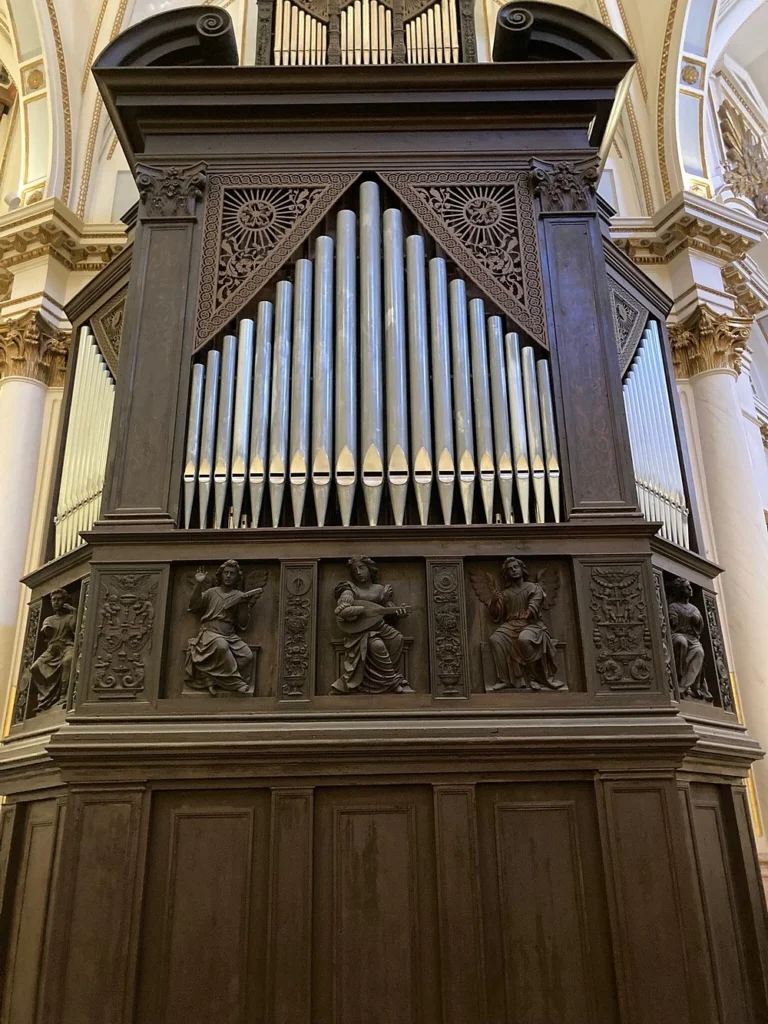
Later Historical Developments
Throughout the Renaissance and Baroque periods, Valencia Cathedral saw additions and modifications reflecting evolving artistic tastes, although these styles had less impact on the overall Gothic framework. In 1931, the Spanish government recognized the cathedral’s cultural and historical importance by declaring it a historic and artistic monument. During the Spanish Civil War, the cathedral suffered significant damage, losing many decorative elements. The choir was dismantled in 1940, and the musical organs—seriously harmed during the conflict—were never restored.
20th Century Restoration and Preservation
The 20th century saw extensive restoration efforts aimed at recovering the cathedral’s original Gothic character. Many Neoclassical elements, added in the 18th century, were removed as part of this process. A landmark exhibition called “The Image’s Light” in 1999 highlighted the cathedral’s artistic and historic significance, after which the building was restored to a sound condition. Subsequently, the regional Valencian government declared it a protected cultural landmark, ensuring continued preservation for future generations.
Architecture of Metropolitan Cathedral Basilica of St. Mary, Valencia, Spain
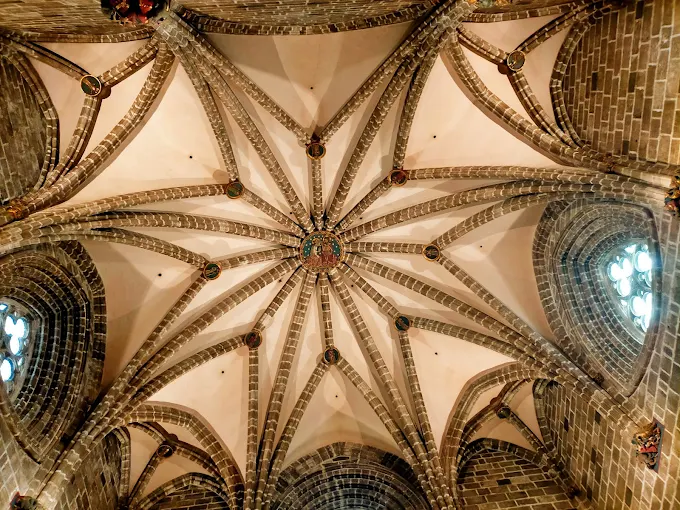
Architect : Pere Compte
Architectural style : Gothic Architecture
Gothic Core and Layout
Valencia Cathedral’s architectural foundation is Gothic, characterized by a cruciform plan featuring north and south transepts and a prominent crossing topped by an octagonal dome called the cimbori. The cathedral includes an ambulatory surrounding a polygonal apse, with eight radiating chapels that were among the earliest completed parts during the late 13th century. The initial construction phase (circa 1270–1300) began simultaneously with the demolition of the mosque. The ambulatory and the Romanesque-style Almoina Gate were the first completed sections. From 1300 to 1350, the crossing was finished, including the west façade up to the Baroque Apostles’ Gate, and three-quarters of the naves and transepts were constructed. The distinctive crossing tower (cimbori) was also started during this period.

Expansion and Later Styles
The chapter house (now the Holy Grail Chapel) and the Miguelete Tower (or El Miguelete) initially stood apart from the main church. Between 1356 and 1369, and later in 1459, architects Francesc Baldomar and Pere Compte expanded the nave and transepts, creating the Arcada Nova, which joined these structures and extended the cathedral to a length of approximately 94 meters (308 feet) and a width of 53.65 meters (176 feet). While the Renaissance (15th–16th centuries) contributed more to the cathedral’s paintings and sculptures—such as the decorations of the high altar and the Resurrection Chapel—its architectural influence was minimal.
The Baroque period brought significant changes, notably the Iron Gate (Puerta de los Hierros), designed in 1703 by German architect Konrad Rudolf. Although Rudolf did not complete the project due to the War of the Spanish Succession, sculptors Francisco and Ignacio Vergara finished the gate. The gate’s concave form produces a unique perspective effect, although this was altered in the 20th century due to urban redevelopment. In the late 18th century, architect Antoni Gilabert Fornés led a renovation aimed at giving the cathedral a uniform Neoclassical style, masking the original Gothic features with stucco and removing pinnacles. Most of these Neoclassical additions were removed during restorations beginning in 1972 to restore the cathedral’s Gothic appearance, except for some ambulatory chapels and sculptures at the base of the dome.
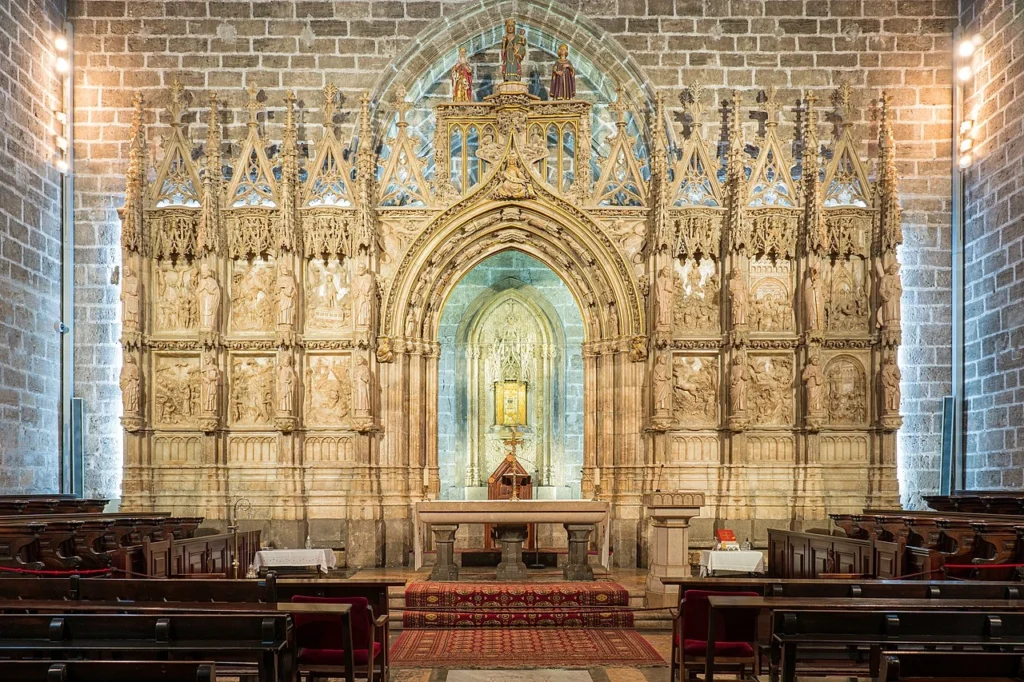
Relics: The Holy Chalice
One of the cathedral’s most famous treasures is the Holy Chalice, traditionally believed to be the authentic Holy Grail. This artifact, potentially dating back to the 1st century, was donated by King Alfonso V of Aragon in 1436. It has served as the official chalice for numerous popes, including Pope Benedict XVI, who used it during a Mass in 2006.
Archaeological Discoveries
The cathedral houses a circular chapel off the Chapter Room containing three closets filled with relics. Behind a neoclassical lintel, religious paintings from the main altar—hidden for many years—were rediscovered during cleaning in 1874. At the cathedral’s front stands the Barchilla Arch, which connects the cathedral to the Archbishop’s Palace. A Roman stone embedded in the arch’s right side indicates the official measures used during Roman times. Excavations conducted to enlarge the cathedral uncovered remains of Roman buildings and streets, emphasizing the long historical layering of the site.
Music Tradition
Valencia Cathedral has historically played a key role in Iberian sacred music. It has hosted numerous esteemed mestre de capella (chapel masters), contributing significantly to the region’s musical heritage. Musicologist Josep Climent Barber has conducted extensive research into the cathedral’s musical archives and traditions.
Feast Day
Feast Day : 15 August
The Metropolitan Cathedral Basilica of Valencia celebrates its main feast day on August 15, the Solemnity of the Assumption of the Virgin Mary. This day honors Mary’s assumption into heaven and is marked by special Masses and processions.
Church Mass Timing
Monday to Friday : 8:00 AM , 8:45 AM , 9:30 AM , 7:00 PM , 8:00 PM
Saturday : 8:00 AM , 8:45 AM , 9:30 AM , 6:00 PM , 7:00 PM , 8:00 PM
Sunday : 8:00 AM , 8:45 AM , 9:30 AM , 11:00 AM , 12:00 PM , 1:00 PM , 6:00 PM , 7:00 PM , 8:00 PM
Church Opening Time:
Monday to Sunday : 07:30 AM – 08:30 PM
Contact Info
Address : Metropolitan Cathedral Basilica of St. Mary
Pl. de l’Almoina, s/n, Ciutat Vella, 46003 València, Valencia, Spain.
Phone : +34 963 91 81 27
Accommodations
Connectivities
Airway
Metropolitan Cathedral Basilica of St. Mary, Valencia, Spain, to Valencia Airport (VLC), distance 29 min (13.0 km) via A-3.
Railway
Metropolitan Cathedral Basilica of St. Mary, Valencia, Spain, to Estació del Nord Carrer de Bailèn, distance between 6 min (1.3 km) via C/ de Pascual i Genís.

